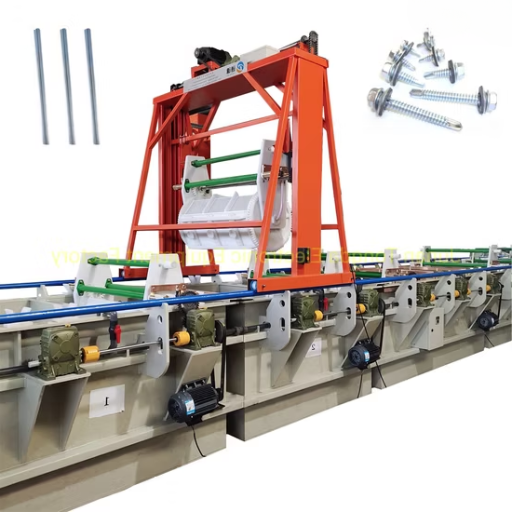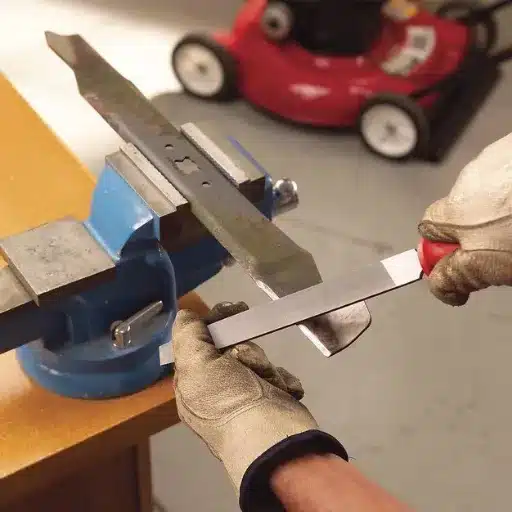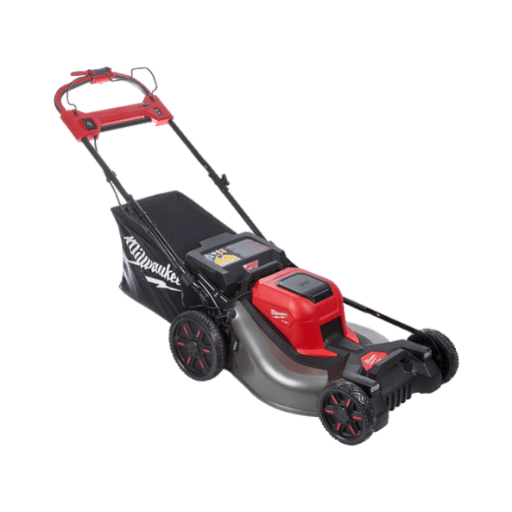Copper plating machines are considered to be very important in a number of industrial and manufacturing processes. This article navigates the complex of this type of machines by assessing how they operate, what their uses are and what benefits they bring in regard to improving the strength and appearance of a product. To begin with, let us first look at the cobalt and copper plating machines manufacture today and how they work and what are the trends which dominate the sector. This guide hopes to address anyone interested in copper plating machines, their processes and features whether they are engaged in manufacturing on a mass scale or are interested in metal finishing on a much smaller scale.
What is a Copper Plating Machine and How Does it Work?

Grasping the Copper Clean-up Process
The routing process makes use of copper plating machines which involve the electrochemical deposition of copper on the surface of the substrate. This is done by immersing the substrate in an electrolyte solution containing copper ions and then passing current through the solution. This current makes the deposition of copper ions onto the substrate possible which gives the surface an even and strong coat. Doing so will improve the cosmetic qualities of the substrate as well as its anti-wear and anti-corrosion properties.
The Role of a Plating Machine in the Electroplating Process
During an electroplating process, a plating machine works as an important device for positioning and applying copper onto different substrates. It controls the electric current supply and the composition of electrolyte solution which assures the quality and quantity of copper electrodeposition. The machine performs these tasks to improve efficiency, minimize errors, and produce an even thickness of plating in different substrates.
Available Types of Copper Plating Equipment
There are numerous industrial copper plating equipment that have been designed to cater for different industry needs. These are barrel plating machines, which have best applications in plating small items in large quantities, rack plating machines that are used for medium scale workers that are delicate in nature, and continuous plating machines that are meant for plating long strips or wires with minimum supervision. Each type has its own benefits depending on the dimensions, contours, and the number of the specific plated items, thus making it possible for manufacturing firms to employ the most suitable types of equipment to their operations.
How to Choose the Right Copper Plating Equipment?

Considerations When Choosing the Copper Plating Machines
In case you are choosing copper plating machines, factors including size and shape of the particular plated objects, how many pieces are to be plated, and the extent of automated processes are to be taken into account. Look also whether this particular piece of equipment will suit your special plating volumes – massive, fragile, long strips or wires. Your choice should be similarly affected by your budget as well as space considerations in a way that the machine recommended for you meets the requirements of cost and efficiency in production. Also think about the possible increase in capacity in the future and the manufacturer’s credibility regarding technical assistance and availability of spare parts.
Comprehension of Various Copper Plating Consumables and Solutions
While selecting some copper plating products, consider the performance of the machine and maintenance and integration into the production process. Focus on equipment reliability and efficiency in operation, as well as the quality of finish the equipment provides. Also evaluate the degree of technological sophistication in the equipment including advanced control systems and energy saving devices which can enhance productivity and reduce operating costs. Some practitioners recommend comparing reviews and other user’s feedback and arguments about the technical attributes of the machine in real life as well as manufacturer’s after sale support services. In the end, choose the answer that best suits the specific needs and operational requirements of your business.
Evaluating Quality and Industrial Standards in Manufacturing of Copper Plating Machines, Accessories, Tools, Equipment
When assessing the characteristics and manufacturing of the copper plating machines, begin from the available certificates and standards like ISO or ASTM compliance. Use machines built of durable materials and good craft since this factors affects his performance and endurance. Look for manufacturers with large experience in the industry and know for great quality assurance measures. Manufacturer’s detailed specifications and documents can also serve as a good indicator of the quality control. In addition, if it is within reach, it is advisable to inspect the supplier’s environment and processes to establish the cultures and ethics that the manufacturers of that equipment subscribe to.
What Industries Benefit from Copper Plating Machines?

Applications in the PCB and Electronics Industry
Copper plating is one of the most important processes in the manufacture of PCBs and used widely in the electronics industry. These machines are responsible for the coating of copper on the electronic parts ensuring good thermal and electrical connectivity. In the electronics world, the development and quality of copper plating dictate the rest of the processes as poor quality copper plating will result in poor quality electronics. Besides, their use can enhance signal integrity and device performance further, making them more relevant to today’s electronic manufacturing.
Copper Plating in Automotive and Aerospace Sectors
Copper plating machines have proven beneficial to several industries, including automotive and aerospace sectors. In these fields, they are used for coating parts and increasing their corrosion resistance, electric conductivity and wear ability. Such a process guarantees the durability and dependability of components; this is especially important in industries such as the above where high performance and safety levels are required.
Decorative and Functional Uses of Copper Plating
Copper plating is an eye-catching finish by which pieces of ornamental jewelry and buildings, etc, can be enhanced. Its functional uses also increase corrosion resistance, improve the electric conductivity, and the strength of many products. Because of these attributes, copper plating not only has an attractive appearance but also increases the life and effectiveness of surfaces coated with it.
How to Maintain and Troubleshoot Copper Plating Machines?

Regular Maintenance Practices for Optimal Performance:
Efficient and adverse copper plating processes and quality practices that require copper plating machines to be regularly maintained such as thorough cleaning of the equipment in order to avoid any build up of dirt particles that may affect the quality of the plating being carried out. Repeated checks also need to be done in order to replace any worn out or broken parts as such will determine effectiveness and safety. Similarly, checking the chemical properties and the temperature of the plating solution will help to achieve uniformity. Establishing a routine maintenance schedule in particular improves the functioning of the machines and prolongs the overall use of the equipment which minimizes the cost of repair and downtime.
Common Problems And Their Solutions
Some of the problems associated with copper plating machines are non-uniform plating, weak adhesion, and pollution of the plating solution. If the deposition is non-uniform, it is necessary to make certain that all the parts have been appropriately prepped and the parts have been electrically calibrated. For weak adhesion, it may be required that the surface preparation be performed in a careful manner and that the cleaning is effective enough in removing all impurities. When the contamination of the plating solution occurs, all or part of the solution should be exchanged or filtered in order to regain the solution`s purity and usefulness. Routine checks and appropriate adjustments are important to ensure that these problems do not compromise quality.
Safety Measures and Handling of Chemicals
Chemical safety in copper plating includes putting on proper PPE like gloves, goggles, and aprons to avoid contact with skin and eyes, while standing and using the ventilator in the correct way to prevent inhalation of fumes. Chemicals must be stored in appropriate containers and affixed with appropriate labels. Also, all SDS safety guidelines must be adhered to. All staff should be retrained every now and then to cover the available emergency actions which can be taken when: there are spills or accidental exposure. Such measures, if applied, minimize the health medicines of workers and safety of the workplace.
What are the Latest Trends in Copper Plating Technology?

Transformations in the Copper Plating Processes
Present-day advances in electroforming technology solutions capitalize in-evolving copper plating processes with better efficiency and reduced environmental impact. Technologies such as pulse plating and high speed plating processes are enabling better control of deposition rates and uniformity while lowering the energy requirements. The emergence of environmentally responsible plating processes and the use of closed loop systems help to promote sustainability by reducing waste and environmental footprints. Moreover, the evolution of automation permits high degree of accuracy and repeatability in plating processes decreasing the human error and increasing the output. These new concepts are what the future holds for the industry of copper plating.
How Technology has affected the Standards within an Industry
There has been a large impact in the industry standards because of the new technology that has emerged in the copper plating portion of the manufacturing sector. Under the new standards, the efficient standards now include new requirements which focus on eco-friendly materials and energy-efficient processes such as the use of pulse plating and closed loop plating systems. In addition, automation and monitoring are being integrated into routine practices to minimize variations resulting from human activities. Hydroplating companies have been urged towards adopting such measures as the industry embraces new technology in order to remain competitive in the market while observing environmental standards.
Copper Plating in Manufacturing Processes and Their Application in the Future
In the coming years, copper plating in manufacturing processes will be influenced by the increasing technological innovation and demand for sustainability. Focus will be on integrating new processes, like pulse plasting and high-speed techniques, that have much greater efficiency. Further, more manufacturers will adopt greener alternatives and closed-loop systems to reduce their carbon footprint. Automated systems and better digital management will further improve accuracy and uniformity of the processes with an aim to common industry practices and requirements overtime. The growing trends in these systems mean that the use of copper plating in manufacturing processes will become more efficient and environmentally friendly.
Reference sources
-
Electroplating Machines – The Ultimate Guide to Copper Plating Machines
-
RapidDirect Blog – Copper Electroplating: How It Works and Its Common Applications
Frequently Asked Questions (FAQs)
Q: What is a copper plating machine?
A: A copper plating machine is a tool that is used for depositing copper on metals or any other surfaces. The process of plating copper, as it is also known, finds applications in different industries such as in embellishing goods or improving their electrical conductivity.
Q: Would you tell us what the copper plating process involves?
A: This process encompasses the following procedures: metal surface preparation, which involves washing with detergent first, acid activation, and then copper sulfate immersion. Copper ion precipitation is electrically supplied through a direct current from a rectifier, resulting in a bright smooth copper on the metal surface.
Q: What is the main difference between a copper plating machine and a nickel plating machine?
A: The main difference is that copper sulfate is used in copper plating machines while nickel plating machines use nickel sulfate. Furthermore, the deposition of copper is optimized using copper plating machines while nickel deposition is optimized in nickel plating machines.
Q: What metals can be electroplated with copper using a copper plating machine?
A: Several metals can be electroplated using copper plating machines, which include steel, aluminum and brass. This process is even applicable to non-metal materials, with the use of an electroless electroplating process where a conductive surface is applied to achieve copper deposit adhesion.
Q: Describe the most notable applications of copper plating machines in the industrial sector?
A: Copper plating machines are mostly applicable within the electronic sector where printed circuit boards (PCBs) are manufactured, within the automotive segment/industry where plating is more decorative and preventive, and for the production of cutting tools to improve the strength and reduce the wear.
Q: For which specific tasks can a copper plating machine be adapted?
A: For particular tasks, a copper plating machine can be modified by altering parameters such as intensities of current, the bath composition and temperature in order to obtain a specific thickness and quality of the copper coating.
Q: What are the precautions to take so as to avoid accidents when using a copper plating machine?
A: Safety measures to observe include the use of personal protective equipment, particularly gloves and goggles, provision of adequate exhaust as inhalation of the fumes should be avoided, and instruction on use of acids and copper sulfate solutions as per the manufacturer’s guide should be followed.
Q: What are some routine problems with the copper plating machine and how can I fix them?
A: Clients talk about uneven layers of the coating, loose bond or the coating is developing holes – pitting. If any of these persistent problems occur, check that the metal surface is clean, correct strength solutions were used, and maintained stable current from the rectifier. It is also possible to look into the user manual of the appropriate machine or to seek assistance of the specialist.










